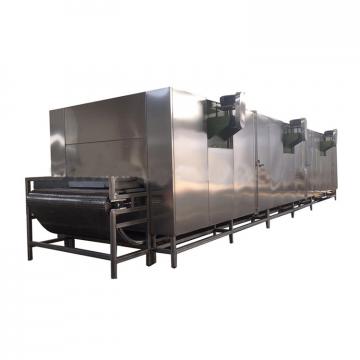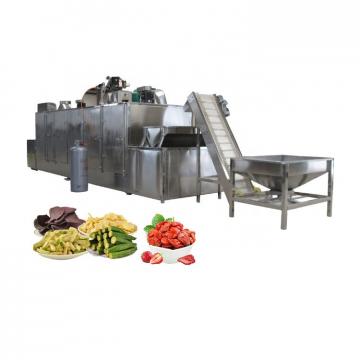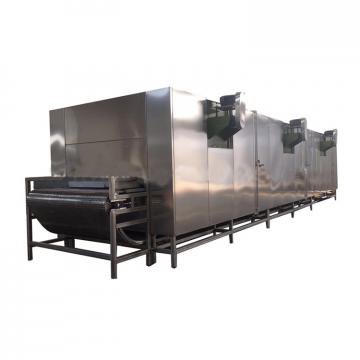
- Oil Expeller, Oil Press and Oil Refinery Machine Supplier
- ----------Shandong Leader Machinery Co.,ltd.
Home> Company News> Benefits and Uses of Castor Oil
- AddressNo.15, Lanxiang Road, Tianqiao District, Ji'nan, Shandong, China
- Factory AddressWest Of Jiyang Road,Rencheng Dist., Jinan, Shandong, China
- Worktime9:00-18:00
- Phone(Working Time)86-0531-85064681
- Phone(Nonworking Time)86-0531-85064681
- Fax86-0531-85064682
Benefits and Uses of Castor Oil
2018-08-30 21:10:32Castor oil is taken from the seeds of castor (about 50% oil). The oil content of the kernel after shelling is as high as 70%, and contains about 18% protein. Castor oil is the only commercial oil containing hydroxyl-based acid. The main producing areas of castor are Brazil, India and the former Soviet Union, and are grown in all provinces of China.
Castor oil contains a lot of ricinoleic acid (more than 80%) and therefore has many unique properties:
1. Soluble in ethanol, difficult to dissolve in petroleum ether. The presence of this property makes it easier to distinguish castor oil from other oils.
2. The viscosity is much higher than that of ordinary oils, 680 CPS at 25 o'clock, viscosity index 84, and low friction coefficient (0.1).
At the same time, castor oil is insoluble in gasoline, with a low freezing point and a high ignition point. Castor oil has good fluidity. Refined castor oil can still flow at -22 hours, and no turbidity after -50 rapid cooling. It is the ideal lubricating oil for lubricating oil and power belt for aviation and high-speed machinery.
3. It has a strong optical rotation because its asymmetric fatty acid in the main fatty acid, ricinoleic acid, is after the 12th position.
4. The dielectric constant is about 4.30, which is the highest among common fats.
5. The relative density and acetyl value of castor oil are greater than those of common fats.
6. Castor oil has almost no oxidative rancidity in the air and has good storage stability. It is a typical non-drying liquid oil.
The physicochemical constant of castor oil:
Relative density (d20 °C4 °C) 0.9550-0.9700
Refractive Index (n20°CD) 1.4765-1.4819
Viscosity (E020 ° C) is greater than 14
Freezing point (°C) 18
Flash point (°C) 322
Iodine value (g iodine / 100g oil) 82-86
Saponification value (mgKOH/g oil) 176-187
Thiocyanate value 81-82
Total fatty acid content (%) about 96
Average molecular weight of fatty acids 290-300
Fatty acid composition of castor oil (%):
Stearic acid 0.5-3.0
Dihydroxystearic acid 0.6-2.0
Oleic acid 3-9
Linoleic acid 2.0-3.5
Ricinic acid 80-88
Castor oil is not edible. High economic value, it is a medicinal laxative; textile, chemical and light industry departments use castor oil as a dyeing aid, lubricant, plasticizing, emulsification and manufacturing of paints, paints, soaps and inks.
Castor oil is treated with concentrated sulfuric acid to give a surface-active sulfate (commonly known as Turkish red oil). Dehydration of castor oil gives a dry fat with a conjugated double bond. Castor oil can be obtained in a variety of products under different hydrogenation conditions, so castor oil is widely used in various industrial sectors. Castor oil is the closest to the pure compound monoglyceride. Among the common oils, only olive oil (containing about 80% oleic acid), safflower oil (more than 70% linoleic acid) and tung oil (about 85% of tung acid) ) has this feature.
The unsaponifiable content of castor oil is less than 1%. The vitamin content is low (about 0.05).
Castor seeds have high oil content. Because of the different uses of oil, the oil extraction method is also different. The medicinal castor oil is cold pressed by a water press, and the temperature does not exceed 50. Otherwise, some impurities will dissolve into the oil and cannot be used for medicinal purposes. The oil obtained by cold pressing is referred to as castor oil No. 1. After the cake is pulverized, it is pressed or leached again to obtain No. 3 castor oil (No No. 2) for industrial use. The direct pressing with a screw press or the pre-press-leaching of castor oil can only be used as an industrial oil.
 Fruit Processing Line Apple Pear Fruit Juice Sugar Processing Production Line
Fruit Processing Line Apple Pear Fruit Juice Sugar Processing Production Line Apple Washing Line Air Bubble Fruit Vegetable Washer Vegetable cleaning machine potato bubble cleaning
Apple Washing Line Air Bubble Fruit Vegetable Washer Vegetable cleaning machine potato bubble cleaning Root Vegetable Peeling Cutting Fruit Cleaning Equipment Conveyor Belt Vegetable Processing Machinery Production Line
Root Vegetable Peeling Cutting Fruit Cleaning Equipment Conveyor Belt Vegetable Processing Machinery Production Line fruit juice juicer production line processing machine
fruit juice juicer production line processing machine Factory Hot Sale Juice Hand Machine 100% Fresh Fruit Juice Production Line Machine
Factory Hot Sale Juice Hand Machine 100% Fresh Fruit Juice Production Line Machine